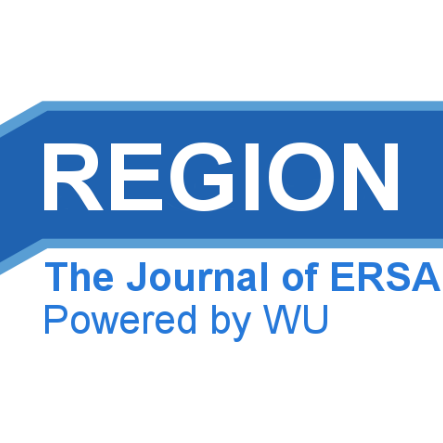Territorial marginality: causes, methods and policies
Introduction to the Special Issue
DOI:
https://doi.org/10.18335/region.v10i2.487Abstract
What are the different factors that make a territory marginal? Are contextual features related to spatial, socioeconomic, institutional, or cultural elements differently influencing marginality in different countries? These are the questions at the origin of this Special Issue.
Marginal areas are traditionally defined as those far from the main urban centres, based on a core-periphery model (Cullen & Pretes, 2000; Gatzweiler & Baumüller, 2014; Herrschel, 2012; Ferrau & Lopes, 2004; Bock, 2016). From this perspective, marginality is an intrinsic spatial condition rather than a transient feature. However, the geographic distance from the poles is only one among the many conditions that can help to define marginality, which could be better defined as a process deeply influenced by socioeconomic changes (Máliková, Farrell, McDonagh, 2016). Marginal regions can be peripheral in geographical location but advanced regarding their socioeconomic situation. On the other hand, not every marginal Region is necessarily peripheral: on the contrary, several studies suggest an interpretation of marginality as a lack of socioeconomic and political connection (Leimgruber, 2004; Pelc, 2006; Bock, 2016).
Moreover, in European countries such as Germany, France and Italy, the concept of marginality has often been associated with rural or mountainous areas. Still, different contributions to this Special Issue show that marginal territories may have very diverse geographical and orographic conditions. In addition, the scale at which a region can be defined as marginal and the administrative borders may also significantly influence the definition of marginality itself.
The lack of a broad, shared definition of marginality affects the identification of marginal territories and the possibility of developing adequate territorial policies to rebalance their marginal condition. Europe shows different attempts at defining marginal territories before proposing devoted policies. For example, Italy refers to the concept of "inner areas" (Materiali Uval, 2014), while the Espon (2017) project PROFECY refers to "inner peripheries". The different names given to marginal territories and the different definitions of marginality require exploring the meaning of considering the other features that may make a territory marginal. As a result, marginality should move from the core-periphery model that considers accessibility to services and goods and distance from central places, considering how a combination of physical, social, economic, institutional and cultural aspects defines marginal territories.
Downloads
Published
How to Cite
Issue
Section
License
Copyright (c) 2023 Bruna Vendemmia, Agim Enver Kerucku, Giovanni Vecchio

This work is licensed under a Creative Commons Attribution 4.0 International License.
REGION is an open journal, and uses the standard Creative Commons license: Copyright We want authors to retain the maximum control over their work consistent with the first goal. For this reason, authors who publish in REGION will release their articles under the Creative Commons Attribution license. This license allows anyone to copy and distribute the article provided that appropriate attribution is given to REGION and the authors. For details of the rights authors grant users of their work, see the "human-readable summary" of the license, with a link to the full license. (Note that "you" refers to a user, not an author, in the summary.) Upon submission, the authors agree that the following three items are true: 1) The manuscript named above: a) represents valid work and neither it nor any other that I have written with substantially similar content has been published before in any form except as a preprint, b) is not concurrently submitted to another publication, and c) does not infringe anyone’s copyright. The Author(s) holds ERSA, WU, REGION, and the Editors of REGION harmless against all copyright claims. d) I have, or a coauthor has, had sufficient access to the data to verify the manuscript’s scientific integrity. 2) If asked, I will provide or fully cooperate in providing the data on which the manuscript is based so the editors or their assignees can examine it (where possible) 3) For papers with more than one author, I as the submitter have the permission of the coauthors to submit this work, and all authors agree that the corresponding author will be the main correspondent with the editorial office, and review the edited manuscript and proof. If there is only one author, I will be the corresponding author and agree to handle these responsibilities.





